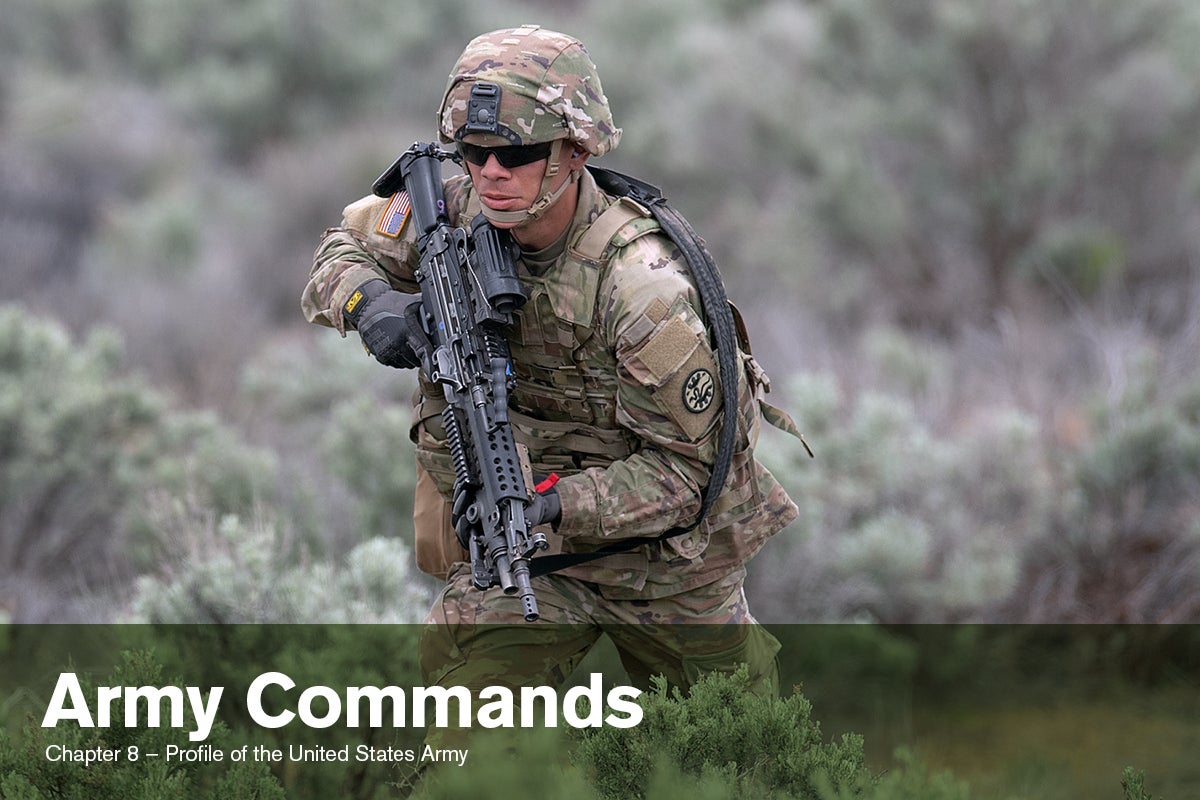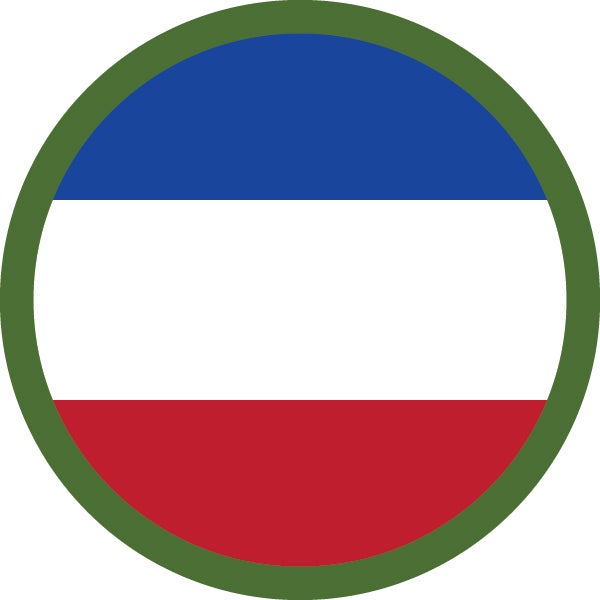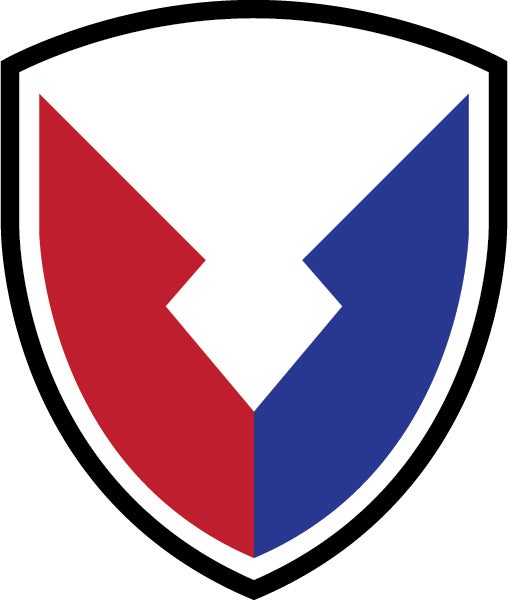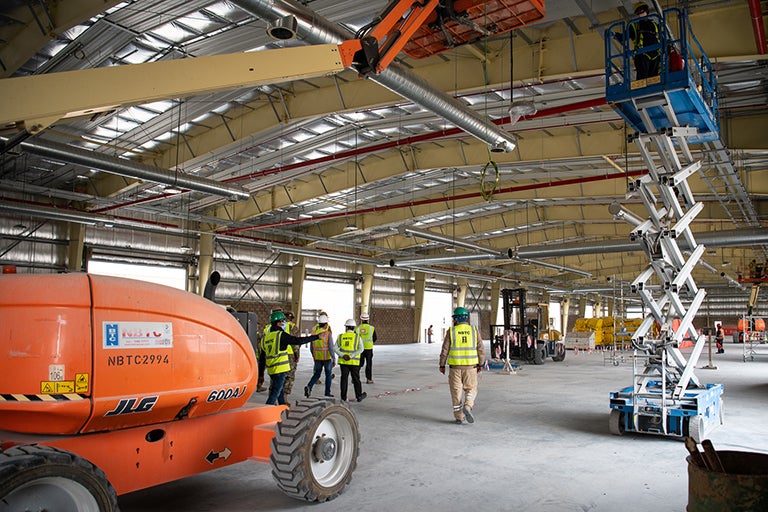Profile of the United States Army: Army Commands
Profile of the United States Army: Army Commands

This is Chapter 8 of the 2022 Profile of the United States Army, a top-to-bottom reference handbook that lays out everything you need to know about how and why the Army works—and what it’s doing around the world right now. Links to other chapters can be found at the bottom of this page.
Unlike unified combatant commands, which comprise two or more branches of the military, Army commands exist solely under Army leadership. There are four Army commands, each with a wide scope, as their missions are an integral part of life that affect every Soldier in the Army—force provision, modernization, materiel management and education of servicemembers:
- U.S. Army Forces Command (FORSCOM);
- U.S. Army Futures Command (AFC);
- U.S. Army Materiel Command (AMC); and
- U.S. Army Training and Doctrine Command (TRADOC).

U.S. Army Forces Command
(FORSCOM)
Fort Bragg, North Carolina
Mission: FORSCOM trains and prepares a combat-ready, globally-responsive Total Force in order to build and sustain readiness to meet combatant command requirements. It provides the Army with Soldiers who are well-led, disciplined, trained, expeditionary and ready, as the guardians of freedom, to deploy and win in a complex world.
Activities: Always ready, FORSCOM units comprise more than 80 percent of the Army’s combat power, constantly training Soldiers to sharpen the American military’s competitive edge. As the Army’s service force provider, FORSCOM is the principal interface with the joint staff to develop force-sourcing solutions to support DoD dynamic force employment objectives. FORSCOM also facilitates joint integration, informs development of the future force, enhances interoperability with allied and partner nations’ armies and contributes to doctrine development.
FORSCOM Regular Army force structure includes three Army corps: I Corps at Joint Base Lewis–McChord, Washington; III Corps at Fort Hood, Texas; and XVIII Airborne Corps at Fort Bragg, North Carolina. FORSCOM also includes Army divisions, brigade combat teams (BCTs) and a full range of additional combat-enabler units.
The BCTs provide the combatant commands with trained, tailored and culturally-attuned forces for missions across the range of military operations—from projecting power and shaping the environment to conducting combined-arms maneuver, wide-area security and security force assistance activities. The enabler capabilities include those crucial to the strategic defense of the homeland, such as air and missile defense and chemical, biological, radiological, nuclear and high-yield explosive defense.
The Army’s Security Force Assistance Command is also part of FORSCOM. Also headquartered at Fort Bragg, it provides mission command of the Army’s Security Force Assistance Brigades.
First Army—headquartered at Rock Island Army Arsenal, Illinois—is the FORSCOM commander’s designated coordinating authority for implementation of the Army Total Force integration. The command partners with Army National Guard and Army Reserve leadership to advise, assist and train units to achieve readiness standards during both pre- and post-mobilization through multicomponent integrated collective training.
The Army National Guard, when mobilized, provides FORSCOM with a balanced force of combat divisions, separate brigades and extensive support units. When mobilized, the FORSCOM commander is responsible for the training and readiness oversight of Army National Guard units.
The U.S. Army Reserve Command (USARC), also headquartered at Fort Bragg, has units and activities throughout the continental United States, each with an individual mission and function that contributes to the accomplishment of the Army’s mission. USARC provides support specialties such as medical, civil affairs, public affairs, transportation, maintenance and supply units to support Army and combatant commanders around the globe.
FORSCOM prepares Soldiers and leaders across the full spectrum of warfare at its two combat training centers (CTCs): the National Training Center at Fort Irwin, California, and the Joint Readiness Training Center at Fort Polk, Louisiana. The CTCs provide realistic and arduous scenarios that are constantly modernized to reflect changing battlefield conditions and to incorporate lessons learned.

U.S. Army Futures Command
(AFC)
Austin, Texas
Mission: AFC plays a pivotal role in initiating, evolving and synchronizing modernization activities across the Army. It acts as the architect of the Army modernization enterprise, rigorously assessing the future operational environment, emerging threats and promising technologies to develop and integrate cutting-edge concepts, technologies, requirements and future force designs. AFC supports the delivery of innovative modernization solutions through its cross-functional teams (CFTs), labs, centers and subordinate commands, which specialize in research, testing and acceleration of novel systems and equipment for Soldiers.
With 26,000 personnel located in approximately 25 states and 15 countries, the command furthers development of Army modernization priorities by cultivating unique partnerships with academia and industry and by executing Project Convergence, the Army’s campaign of learning and experimentation that is designed to transform the way future warfighters will operate in fast-paced, high-tech and multi-domain environments. With each endeavor, AFC strives to ensure that new designs and tests are shaped around the needs and inputs of Soldiers, who will form the future fighting force.
Activities: AFC includes eight CFTs and multiple centers, laboratories and subordinate commands. The CFTs and select centers and subordinate commands are as follows:
Long-Range Precision Fires (LRPF), located at Fort Sill, Oklahoma, leads a comprehensive modernization effort to deliver cutting-edge, surface-to-surface fires systems that significantly increase range and effects over currently fielded U.S. and adversary systems. The LRPF CFT, working closely with Army and industry partners, is driving solutions for the next generation of field artillery systems across all echelons: strategic, operational and tactical.
Next-Generation Combat Vehicle (NGCV), located at Detroit Arsenal in Warren, Michigan, is working to narrow or close cross-domain maneuver capability gaps by developing Army requirements for the next generation of combat vehicles—while synchronizing and overseeing all supporting materiel development activities, experiments and assessments. The NGCV CFT uses a rapid, iterative process of capability development to reduce costs, technological obsolescence and acquisition risk and to increase the speed of delivery.
 The V-280 Valor cockpit simulation on display in a Bell Flight hangar in Arlington, Texas, 28 October 2020. In 2014, the Army selected Sikorsky-Boeing and Bell teams to continue the Joint Multi-Role Technology Demonstrator to flight demonstration, proving out transformational vertical lift capabilities while bringing down risk for Future Vertical Lift efforts (U.S. Army photo by Luke Allen).
The V-280 Valor cockpit simulation on display in a Bell Flight hangar in Arlington, Texas, 28 October 2020. In 2014, the Army selected Sikorsky-Boeing and Bell teams to continue the Joint Multi-Role Technology Demonstrator to flight demonstration, proving out transformational vertical lift capabilities while bringing down risk for Future Vertical Lift efforts (U.S. Army photo by Luke Allen).
Future Vertical Lift (FVL) leads development of critical combat systems, ensuring that Army aviation maintains vertical lift dominance over enemy forces in future Multi-Domain Operations (MDO). The FVL CFT will enable the joint force to operate, even when dispersed over wide areas, with increased lethality, survivability and reach by penetrating enemy defenses and subsequently exploiting open corridors with enhanced attack and reconnaissance, Air Assault and MEDEVAC (medical evacuation) capabilities.
The Network (NET), located at Aberdeen Proving Ground, Maryland, conducts experiments, demonstrations and prototypes to inform requirements, to synchronize efforts designed to keep pace with threats and to develop a data-centric future network through the rapid insertion of new technology. NET CFT activities address the most pressing challenges to the tactical network that Soldiers use on the battlefield or in any dynamic, lethal environment.
Air and Missile Defense (AMD), located at Fort Sill, Oklahoma, works to outpace strategic competitors who have invested heavily in their indirect fire and missile capabilities. The development of new AMD technologies, accelerated by the CFT, will defend ground forces against adversary air threats, as well as protect the infrastructure of U.S. and allied forces against a host of air and missile threats.
Soldier Lethality (SL) increases the lethality of the close combat force by focusing on the capabilities necessary at the Soldier and squad level to gain and retain a clear and decisive overmatch against peer and near-peer threats. The SL CFT focuses on kitting the Soldier and the squad holistically, as a system and a combat platform, to enhance lethality, precision, mobility and maneuverability, communications and survivability.
Assured Positioning, Navigation and Timing/Space (APNT/Space), located at Redstone Arsenal in Huntsville, Alabama, is responsible for accelerating the delivery of advanced APNT and tactical space and navigation warfare capabilities to the Soldier. The APNT/Space CFT conducts experimentation and writes Soldier-centric requirements for APNT materiel solutions, low-Earth orbit space and navigation warfare capabilities that, when combined, provide overmatch on the battlefield with minimal impact to Soldier operations.
Synthetic Training Environment (STE), located in Orlando, Florida, rapidly expands the Army’s synthetic training environment and increases distribution of simulations capabilities down to the company level. The STE CFT delivers collective training, accessible at the point of need, to support operational, self-development and institutional training for Soldiers anytime and anywhere in the world to hone skills, develop task proficiency and sustain readiness.
Centers and Subordinate Commands
The Army Applications Laboratory, based in Austin, Texas, aligns innovative solutions and technologies with Army problems, resources and programs to rapidly discover, validate and transition technology applications in support of Army modernization.
The Army Artificial Intelligence Integration Center, located at Carnegie Mellon University in Pittsburgh, Pennsylvania, leads and integrates Army artificial intelligence (AI) strategy and implementation, synchronizes key development efforts and sets the foundations for operationalizing AI within the Army modernization enterprise.
The Army Software Factory, based in Austin, Texas, is a first-of-its-kind integrated software development initiative to teach, develop and employ self-sustaining talent from all ranks within the military and civilian workforce. It aims to increase digital proficiency across the Army; to solve problems by leveraging agile cybersecurity and cloud computing solutions; and to harness innovation through close collaboration with academia and the tech industry.
The Acquisition and Systems Directorate at AFC headquarters facilitates the Army modernization enterprise’s efforts to refine, engineer, integrate and develop solutions to meet identified requirements. It maintains operational oversight of the cost, schedule, integration and technical performance of all programs aligned within and among the Army’s CFT efforts. It is the command’s focal point for integration and synchronization with ASA(ALT)—Assistant Secretary of the Army (Acquisitions, Logistics and Technology)—and the 12 program executive offices.
The Futures and Concepts Center assesses the threat and future operational environment and develops future concepts, requirements and an integrated modernization pathway to increase lethality and overmatch, enabling Soldiers and units to compete—and, if necessary—to deploy, fight and win future wars.
The U.S. Army Combat Capabilities Development Command is the Army’s largest technology developer, with more than 10,000 engineers and scientists. Its mission is to provide research, engineering and analytical expertise to deliver capabilities that enable the Army to deter and, when necessary, decisively defeat any adversary now and in the future. It ensures the dominance of Army capabilities by creating, integrating and delivering tech-enabled solutions, and it will give Soldiers a decisive edge in MDO by 2030 and beyond.
The Medical Research and Development Command, headquartered at Fort Detrick, Maryland, encompasses eight subordinate commands located throughout the world. It is the Army’s medical materiel developer, with responsibility for medical research, development and acquisition. The command’s expertise in these critical areas helps to establish and maintain the capabilities that the Army needs to remain ready and lethal on any battlefield.

U.S. Army Materiel Command
(AMC)
Redstone Arsenal, Alabama
Mission: AMC delivers logistics, sustainment and materiel readiness from the installation to the forward tactical edge to ensure globally dominant land force capabilities. The command’s complex missions range from installation management and quality of life to manufacturing and maintenance to transportation and logistics. From managing the Army’s installations, arsenals, depots and ammunition plants to maintaining Army prepositioned stocks, AMC assures supply availability, ensuring that America’s fighting force has the right equipment in the right location at the right time. AMC touches multiple phases in the materiel life cycle, including contracting, distribution, refurbishment and resale.
Activities: AMC leads and directs logistics and sustainment warfighting functions from the installation to the battlefield to meet Army readiness requirements during crisis, competition and conflict and to ensure the best-equipped and sustained fighting force in the world. AMC is the Army’s primary logistics and sustainment command, responsible for managing the global supply chain and ensuring installation and materiel readiness across the Total Force. As one of the Army’s largest commands, AMC’s approximately 175,000-strong military, civilian and contractor workforce is at the core of the command’s support to Soldiers.
As one of four Army Commands and the Army’s lead materiel integrator, AMC synchronizes and operationalizes the capabilities of 10 major subordinate commands, providing materiel and sustainable readiness to meet today’s requirements and to prepare for the next contingency. AMC centralizes installation management and all classes of supply and sustainment functions under one command, synchronizing actions and improving planning, distribution and maintenance to better support Army readiness.
The command leads, manages and operates the Army’s organic industrial base (OIB), consisting of 23 arsenals, depots and ammunition plants. The OIB overhauls, modernizes and upgrades major weapon systems to make them even more lethal and reliable. It manufactures and resets Army equipment, generating readiness and operational capability throughout Army formations.
 A team from the U.S. Army Corps of Engineers walks through one of five Army prepositioned stock buildings currently under construction at Camp Arifjan, Kuwait, on 31 January 2022. When completed, the five facilities will provide critical environmental protection for Army Materiel Command’s pre-positioned stock, part of a U.S. Army program in which equipment sets are stored around the globe for use when a combatant commander requires additional capabilities (U.S. Army photo by Richard Bumgardner).
A team from the U.S. Army Corps of Engineers walks through one of five Army prepositioned stock buildings currently under construction at Camp Arifjan, Kuwait, on 31 January 2022. When completed, the five facilities will provide critical environmental protection for Army Materiel Command’s pre-positioned stock, part of a U.S. Army program in which equipment sets are stored around the globe for use when a combatant commander requires additional capabilities (U.S. Army photo by Richard Bumgardner).
AMC is regionally-aligned and globally-responsive, providing assets through a network of teams that includes Army field support brigades, contracting support brigades, transportation brigades and field assistance science and technology teams, all of which identify and resolve equipment and maintenance problems as well as materiel readiness issues for combatant commands. It handles diverse missions that reach far beyond the Army. For example, it manages the multibillion-dollar business of selling Army equipment and services to partner nations and allies of the United States, and it negotiates and implements agreements for co-production of U.S. weapon systems by foreign nations. AMC includes global transportation experts who avail warfighters with a single-surface distribution provider for adaptive solutions that deliver capability and sustainment on time.
Among its many contributions to materiel readiness, it is also a key enabler of Army power projection—rapidly and effectively mobilizing, deploying and sustaining forces—a critical component to Army readiness. AMC-operated transportation offices, depots, arsenals, plants and ports and AMC-managed installation deployment infrastructure are critical to the nation’s power-projection capabilities.

U.S. Army Training and Doctrine Command
(TRADOC)
Joint Base Langley-Eustis, Virginia
Mission: TRADOC recruits, trains, educates, develops and builds the Army. It establishes standards, drives improvement and leads change to ensure that the Army can deter, fight and win on any battlefield, now and into the future.
In support of this mission, TRADOC identifies six priorities: acquire, improve, build, reform, inform and lead and inspire. In acquirement, TRADOC meets endstrength goals with Soldiers and leaders who are fit, ready and deployable with performance optimized for combat—i.e., Soldiers prepared for battle. In its mission to support improvement, it infuses quality into everything and ensures a continuous learning environment that enables leaders to pursue excellence, enforce high standards and lead by example—because Soldiers deserve great leadership. In building now and for the future, TRADOC provides the operating force with quality doctrine, organization, training, materiel, leadership, personnel and facilities (DOTMLPF) solutions integrated across all warfighting functions and domains, ensuring a lethal, agile and resilient force, built of formations ready for war. Reform energies, which drive improvement, consist of leveraging innovative ideas from Soldiers, civilians and family members, achieving higher-quality outcomes, reducing costs and improving quality of life. Efforts to inform seek to ensure that citizens and Soldiers understand why service matters—and that a Soldier is a Soldier for life. Finally, in leading and inspiring, TRADOC establishes guideposts to lead the Army through transitions, ensuring achievement of the Army Vision of an MDO-ready Army, leading change and ensuring victory.
TRADOC was born of innovation and agility; consequently, it quickly adapts to a shifting world in national and institutional situations, in both peace and war. TRADOC’s adaptive character and culture ensure that the Army remains the nation’s “force of decisive action”—victory for America’s Army begins with TRADOC.
Activities: TRADOC’s mission is executed in training, maintenance, morale, discipline and teamwork. In training, it builds tenacity and sustained readiness with training programs, empowered leaders and mission support. In maintaining the Army, it sustains the Army mission, establishing stability, building resiliency, embracing family life, engaging community and creating balance in Soldiers’ lives. It supports morale by providing mentorship, education and quality of life, thereby establishing predictability, celebrating diversity and overall making a difference that motivates Soldiers to achieve their potential. TRADOC also encourages discipline, which so often entails doing the right thing, even when no one is looking; it also means taking personal responsibility and accountability seriously, holding high standards and sharing best practices. Finally, TRADOC instills in all Soldiers the idea that teamwork is part and parcel of who they are; their shared experiences and the common purpose of service to the nation are integral to their mission.
Nearly 40,000 Soldiers and more than 14,000 civilians work at TRADOC locations throughout the United States. In Fiscal Year 2021 (FY21), TRADOC trained more than 778,000 Soldiers, including 345,000 active duty, 79,000 Reservists and 148,000 National Guardsmen. TRADOC also provides training for more than 162,000 civilians. It lends its world-class facilities and ranges to train servicemembers in the sister services; during FY21, this included approximately 22,000 Marines, 7,500 Sailors, 10,200 Airmen and 225 Coast Guardsmen.
In addition, more than 7,000 Army-sponsored international students from over 150 foreign countries took courses at DoD Schools; more than half of those students were taught at TRADOC schools. This interaction provides international partners with necessary skills, knowledge and understanding while enhancing relationships, cooperation and shared security efforts. Every year, approximately 9,000 recruiters in over 1,400 locations bring in many thousands of future Soldiers from communities across the United States. These recruiters provide volunteers to roughly 2,750 drill sergeants, transforming civilian men and women into professional Soldiers during their initial entry training.
Army ROTC (Reserve Officers’ Training Corps) is the nation’s largest commissioning source—producing over 5,800 second lieutenants each year, or approximately 70 percent of all officers entering the Army annually. The Senior ROTC program is available in all 50 states and four U.S. territories at over 950 college campuses. U.S. Army Cadet Command also creates better citizens through the congressionally directed Junior ROTC program, which consists of over 276,000 JROTC Cadets at over 1,700 programs across the United States and in four territories and four countries.
★ ★ ★ ★
Chapter 9: Army Service Component Commands
2022 Profile of the United States Army
Foreword
Chapter 1: National Defense
Chapter 2: The Land Component
Chapter 3: Army Organization
Chapter 4: The Soldier
Chapter 5: The Uniform
Chapter 6: The Army on Point
Chapter 7: Army Families
Chapter 8: Army Commands
Chapter 9: Army Service Component Commands
Chapter 10: Direct Reporting Units

